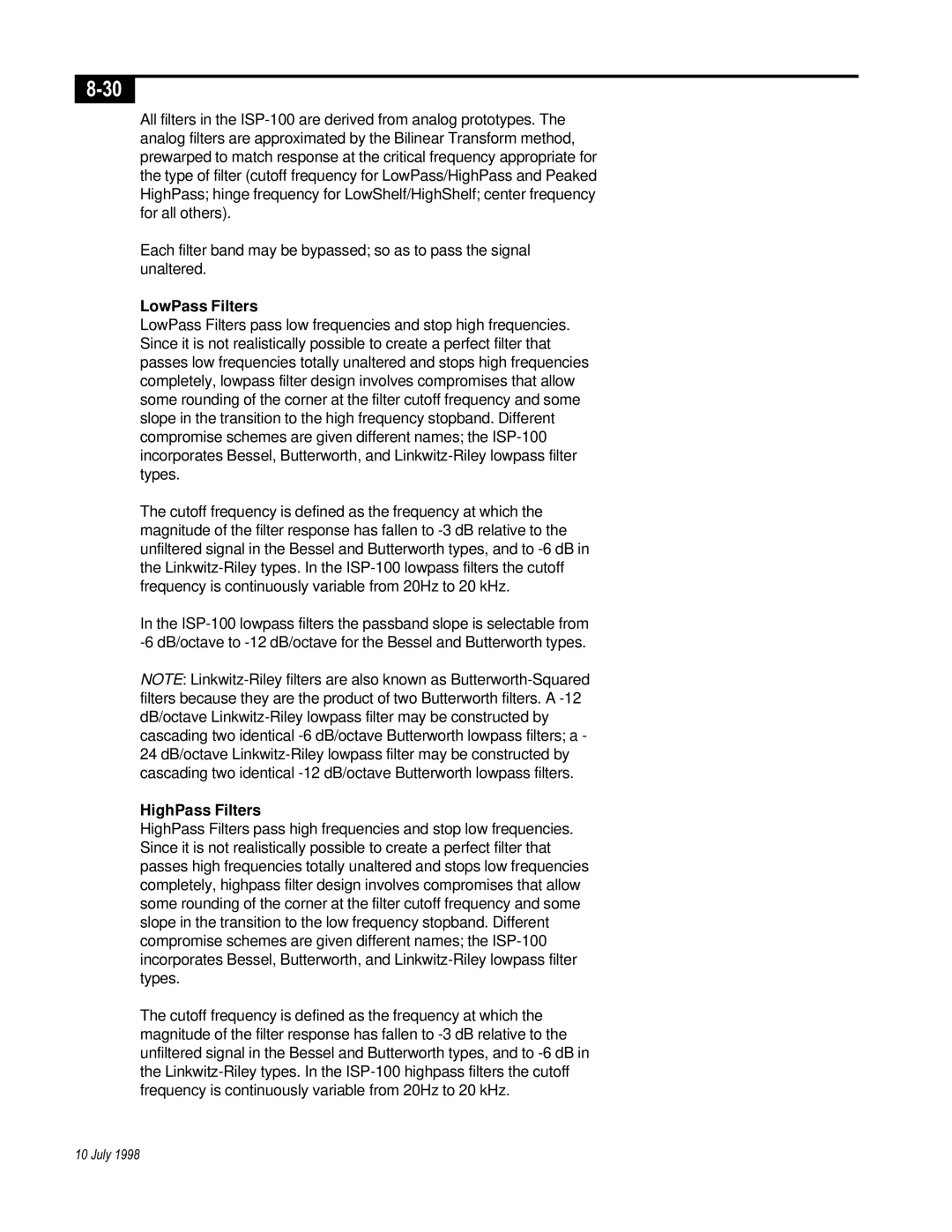All filters in the ISP-100 are derived from analog prototypes. The analog filters are approximated by the Bilinear Transform method, prewarped to match response at the critical frequency appropriate for the type of filter (cutoff frequency for LowPass/HighPass and Peaked HighPass; hinge frequency for LowShelf/HighShelf; center frequency for all others).
Each filter band may be bypassed; so as to pass the signal unaltered.
LowPass Filters
LowPass Filters pass low frequencies and stop high frequencies. Since it is not realistically possible to create a perfect filter that passes low frequencies totally unaltered and stops high frequencies completely, lowpass filter design involves compromises that allow some rounding of the corner at the filter cutoff frequency and some slope in the transition to the high frequency stopband. Different compromise schemes are given different names; the ISP-100 incorporates Bessel, Butterworth, and Linkwitz-Riley lowpass filter types.
The cutoff frequency is defined as the frequency at which the magnitude of the filter response has fallen to -3 dB relative to the unfiltered signal in the Bessel and Butterworth types, and to -6 dB in the Linkwitz-Riley types. In the ISP-100 lowpass filters the cutoff frequency is continuously variable from 20Hz to 20 kHz.
In the ISP-100 lowpass filters the passband slope is selectable from -6 dB/octave to -12 dB/octave for the Bessel and Butterworth types.
NOTE: Linkwitz-Riley filters are also known as Butterworth-Squared filters because they are the product of two Butterworth filters. A -12 dB/octave Linkwitz-Riley lowpass filter may be constructed by cascading two identical -6 dB/octave Butterworth lowpass filters; a - 24 dB/octave Linkwitz-Riley lowpass filter may be constructed by cascading two identical -12 dB/octave Butterworth lowpass filters.
HighPass Filters
HighPass Filters pass high frequencies and stop low frequencies. Since it is not realistically possible to create a perfect filter that passes high frequencies totally unaltered and stops low frequencies completely, highpass filter design involves compromises that allow some rounding of the corner at the filter cutoff frequency and some slope in the transition to the low frequency stopband. Different compromise schemes are given different names; the ISP-100 incorporates Bessel, Butterworth, and Linkwitz-Riley lowpass filter types.
The cutoff frequency is defined as the frequency at which the magnitude of the filter response has fallen to -3 dB relative to the unfiltered signal in the Bessel and Butterworth types, and to -6 dB in the Linkwitz-Riley types. In the ISP-100 highpass filters the cutoff frequency is continuously variable from 20Hz to 20 kHz.
